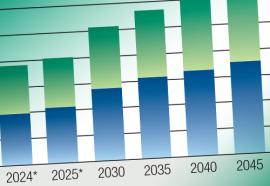The Speed-to-Power Potential of GETs
Faster, Less Expensive Options to Strengthen the Grid
“Grid enhancing technologies (GETs) – also known as advanced transmission technologies (ATTs) – are hardware and software that can be deployed relatively quickly and cheaply to increase the
efficiency of and space on the existing electricity grid.”











